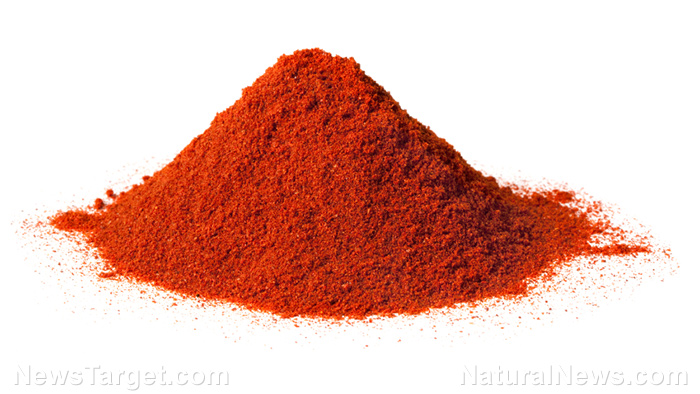Spice up your diet with paprika’s health benefits
08/07/2020 / By Divina Ramirez

Paprika can be a great addition to a number of dishes, from salads to roasts. But studies find that this popular pepper-based spice introduces more than just heat to foods.
In one of her most recent articles published online, Elizabeth Streit, a registered dietitian nutritionist based in Minnesota, shared some science-backed health benefits of paprika.
Health benefits of paprika, according to science
Paprika comes in a range of colors, smells and spiciness, but this does not alter nor affect its health benefits. Here are eight of its most popular benefits, according to Streit:
Contains essential nutrients
Paprika is made from ground capsicum peppers or bell peppers. These peppers can differ in terms of their heat factor, but their nutrition profile more or less remains the same. For this reason, paprika contains an incredible range of nutrients and antioxidants.
In particular, paprika is abundant in vitamins A and E. Both of these micronutrients double as antioxidants to protect cells from free radical-induced damage and oxidative stress. Paprika is also rich in iron, an essential mineral for red blood cell production.
Other nutrients found in this rich and pungent spice include fiber for gut health and vitamin B6 for brain health. Paprika also has plant antioxidants called carotenoids that include compounds like beta-carotene, capsanthin, zeaxanthin and lutein.
Maintains good eyesight
Vitamin A is an important micronutrient for maintaining healthy eyesight. Beta-carotene, lutein and zeaxanthin, on the other hand, help reduce the risk of eye conditions, including cataracts and age-related macular degeneration.
Fights inflammation
Spicier paprika contains capsaicin, a compound found in hot chili peppers like habanero and jalapeno. Scientists found that capsaicin is capable of binding to receptors that reduce pain and inflammation.
For this reason, paprika might be a promising holistic treatment for arthritis, a chronic condition that causes inflammation of the joints and connective tissues. In fact, some studies demonstrate that topical creams containing capsaicin can help ease arthritic pain.
Reduces cholesterol
Scientists identified another carotenoid in paprika that can help reduce bad cholesterol in the bloodstream. The carotenoid, called capsanthin, can also increase the amount of good cholesterol in the blood. This cholesterol has been linked to a reduced risk of heart disease.
Protects against cancer
Recent studies suggest that the beneficial plant compounds in paprika, including beta-carotene, lutein and zeaxanthin, might also be potent against cancer.
In particular, these compounds have been found to inhibit the spread of cancer cells and keep them from aggregating into tumors.
Regulates blood sugar
Some studies on diabetes management found that taking capsaicin supplements or eating capsaicin-containing peppers, such as those used to make paprika, can protect against sudden spikes in blood sugar after meals.
Boosts blood circulation
Iron and vitamin E are just some of the most important micronutrients for proper blood circulation and optimal heart health. Iron aids in making red blood cells needed to transport oxygen from the lungs to the tissues.
Vitamin E, on the other hand, helps regulate blood pressure and keeps blood from clotting inside vessels. (Related: Abnormal blood clot formation can be prevented through natural means.)
Complements most foods
People not used to stronger, earthier spices might feel intimidated to start adding it to foods all of a sudden, but don’t fret. Paprika, although pungent, is mild enough so as to not hijack an entire dish or recipe.
In fact, a lot of people add paprika to soups, salads, roasts and rice dishes to add a hint of smokiness or a spicier kick. Some recipes also call for paprika as a seasoning for meat and fish.
Paprika might not be appealing for milder taste buds out there. But like most plant-based foods, it offers a host of health benefits. Don’t miss out on them and start adding this rich and pungent spice to dishes or incorporate it into recipes.
Sources include:
Submit a correction >>
Tagged Under:
alternative medicine, anticancer, food cures, food is medicine, functional food, natural cures, natural ingredients, natural medicine, nutrients, nutrition, organics, paprika, spice
This article may contain statements that reflect the opinion of the author
RECENT NEWS & ARTICLES
COPYRIGHT © 2017 NATURAL HEALTH NEWS





















